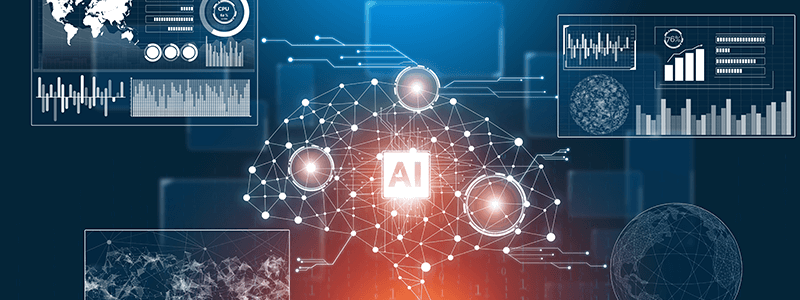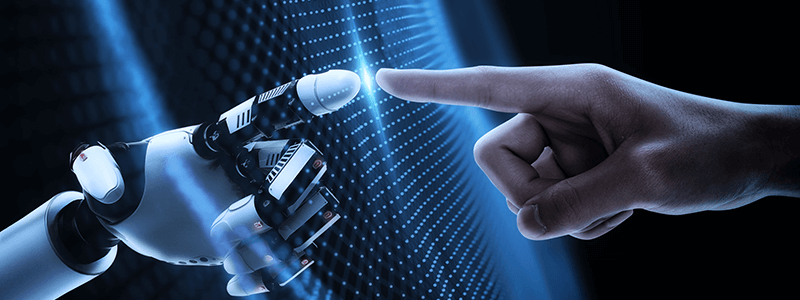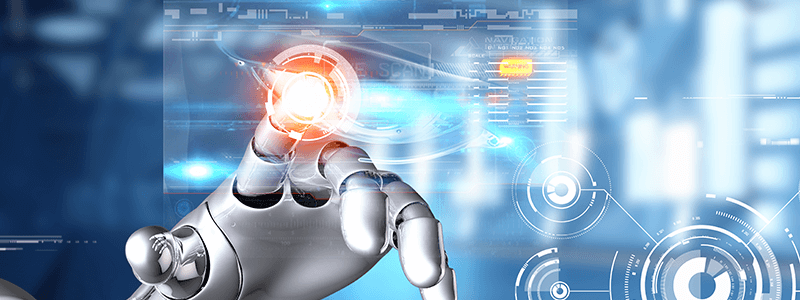share
Table of Contents
● The Development of AI-based Software Testing
● Why We Need AI in Software Testing
● Benefits of AI-based Software Testing
● Defects of AI-based Software Testing
What is AI-based Software Testing?
AI-based software testing is a testing technique that uses artificial intelligence(AI) and machine learning (ML) algorithms to effectively test software, with the goal of making the testing process smarter and more efficient. The use of AI and machine learning for logical reasoning and problem-solving in testing can improve the software testing process. In addition, we can use AI testing tools using data and algorithms to design and run tests, which helps to decrease manpower investment.

The Development of AI-based Software Testing
Software testing has come a long way in the last 20 years and the evolution of testing from manual to automated testing has been encouraging.
However, to catch up with the fast development of IT, well-researched and proven new testing methods and techniques become the priorities.
AI algorithms can fully simulate human intelligence, and machine learning allows computers to learn autonomously without any human intervention. Both AI and machine learning use specific algorithms that can access data, learn from data to make decisions by using models, and finally be used in software testing.
Many companies develop software testing tools using AI and Machine Learning which effectively benefits the companies and improves the ROI due to their faster and continuous, and fully automated testing.
Why We Need AI in Software Testing?
Nearly 80% of the testing workload is repetitive which costs a lot of time and manpower. This is common in software testing, however, as the increment of project scale and parameters, the workload of the testing team grows concurrently, which may be beyond their capacity and working time.
Manual testing also faces scalability challenges, that is the requirement of the management of multiple machines, a complex and cumbersome approach.
However, AI can solve the above-mentioned problems in the following ways:
80% of repetitive tasks can be done by AI, and the remaining 20% of the work can be done by humans using their creativity and reasoning skills. Thus, AI can do repetitive tasks such as the amount of test data, regression testing, etc., while testers can focus on handling creative and difficult tasks similar to system integration testing.

AI can refactor tests to incorporate new parameters which will increase test coverage without bringing additional workload to the team.
AI can automatically create test cases, which reduces the level of effort (LOE) for quality build in.
By understanding user acceptance criteria, AI can automatically generate test cor pseudo code to performance automation testing which save significant time and money.
AI can also perform codeless test automation, which can automatically create and run tests on your web or mobile application without writing any code.
AI can work around the clock, they can help debug projects whenever they are needed, so tests can run for longer periods without human intervention.
Benefits of AI-based Software Testing
Visual Verification
AI is able to do pattern recognition and image recognition to discover visual defects and help to ensure all visual elements are engaging and function properly. Regardless of the size or shape of the controls, dynamic UI controls can be identified and analysed at the pixel level using AI.
More accurate test results
The chances of human errors are high especially when performing repetitive tasks. Automation testing helps to eliminate these human errors. And with the help of AI in automation testing, repetitive tasks can be handled more efficiently, test results can be recorded more accurately. AI helps to reduce the appearance of errors and improve the accuracy of testing.
Higher test coverage
AI-based testing helps increase test coverage as it seamlessly examines file contents, data, memory and internal program state. It also helps to determine whether programs are working as expected and ensures effective test coverage.
Save time and money
Tests need to be executed repeatedly whenever changes are made to the source code. And it costs much time and money with manual testing. However, repetitive tasks can be executed correctly, quickly, and efficiently with AI-based testing.
Faster time-to-market
AI-based testing supports continuous testing which helps to release the software products faster and to bring the software products to the market sooner.
Fewer defects
AI-based software testing helps to find defects quickly in the early stage of development, resulting in fewer defects and more reliable software products.
Defects of AI-based Software Testing
Humans are complex and unpredictable, while AI is not yet mature enough to replicate real users’ operations.
According to the research, 85% of the customers are likely to stop cooperation with a company with insufficient experience in mobile application development.

That’s why it is important to get it right the first time. AI still has a long way to go before it can accurately replicate and test scenarios, and environments used by an application or website, including network speed, local weather, infrastructure, time, etc.
Challenges of AI-based Software Testing
The challenges and problems that may come along when building AI-based testing tools are as follows:
Identifying, and refining the algorithms required.
Collecting a large amount of data to train the AI.
How does the AI process the input data?
Can the AI repeat the task, even though the data is new?
AI learning and training will never stop as the algorithms are being constantly improved.
AI-based SoftwareTesting Tools
Applitool uses an adaptive algorithm for visual verification and does not require various prior setups to explicitly call all elements, but is able to find potential errors in the application.
Create automated test scripts automatically by using machine learning and cognition based on the mapping of the application and the analysis of real user activity.
The Eggplant Digital Automation Intelligence uses AI and deep learning to discover defects from the interface and can automatically generate test cases, improving test efficiency and coverage.
Mabl is an AI testing platform focusing on functional testing for applications and websites.
ReTest is a testing tool developed by a German company that uses intelligent monkey testing.
Sauce Labs, from whom Appium, the mobile app automation testing framework, comes, was one of the companies to start cloud-based automation testing.
Sealights is a cloud-based testing platform that can use machine learning techniques to analyse SUT code and the tests.
Test.AI (formerly Appdiff ) dynamically identifies screens and elements in any application and automatically drives the application to execute test cases.
Focused on reducing flaky tests and test maintenance, Testim tries to use machine learning to speed up the development, execution and maintenance of automated tests, allowing us to start trusting our tests.
In addition to the above tools/platforms, tools like Functionize , Panaya Test Center 2.0, Kobiton, Katalon Studio and Tricentis Tosca, Testim are also AI-powered.
AI and ML in Automation Testing
Self-Healing in Automation Testing
Self-healing in automation testing can effectively maintain test scripts. Based on the dynamic positioning strategy, automation test scripts will break at each stage of changes to object properties including name, ID, CSS, etc., so that the program can automatically detect changes and dynamically fix them without any human intervention. As a result, in agile testing, the project team can speed up software product delivery and increase productivity by using the shift-left approach.
In specific applications, the AI-based test platform follows an end-to-end processing flow, using the AI engine to discover test item breaks caused by changes to object attributes, and then extracts the entire DOM with self-healing techniques to drill down into individual attributes. As each test case is automated, the process can be used to make changes without human intervention, using dynamic targeting strategies.
Automated Test Script Generation
In the past, when we needed to develop automated test scripts, developers were often required to have skills related to high-level programming languages such as Java, Python and Ruby. Obviously, this was a time-consuming and labour-intensive process. Today, AI and ML technologies can significantly simplify the entire process of designing and developing test scripts.

Efficient use of Large Amounts of Test Data
Many organisations implementing continuous testing using Agile and DevOps methodologies are testing units, APIs, functionality, accessibility, integration and other aspects of their software applications using a rigorous end-to-end testing approach several times a day throughout the software development lifecycle.
The increase in the volume of data to be tested, as opposed to the increase in the content of these tests, prevents project teams from making better and more accurate decisions with their software applications. Machine learning makes it easy for developers to focus on the impact of big data on key software functions and services by visualising the highly volatile test cases.
In practice, AI and ML systems can easily slice, dice and analyse massive amounts of data, providing interpretation of models, quantification of business risks and speeding up the decision-making process for targeted projects. Developers can also use AI and ML systems to prioritise continuous integration jobs to be addressed or to identify potential errors in the target platform in the environment to be tested.
Using AI to Automate Web Crawling
Today, many developers also use AI-based automation techniques to automatically write test cases for applications. That said, some novel AI/ML tools are able to crawl web applications.
In the crawling process, such tools first collect data by doing things like taking screenshots, downloading HTML code for each page, and measuring traffic load, and continuously repeating the previous steps. They then build a complete dataset based on the collected data and build a model for machine learning based on the expected patterns and behaviour of the application to be tested. Such tools then compare the patterns observed at the current stage with the patterns from previous inputs. If there are deviations in the results, they flag them as errors in the test. Finally, these flagged problems are validated by engineers with knowledge of the domain. As can be seen, although the ML tools are primarily responsible for the error detection process, manual verification is still essential.
 51Testing
51Testing October 19 2022
October 19 2022














 51Testing
51Testing October 19 2022
October 19 2022